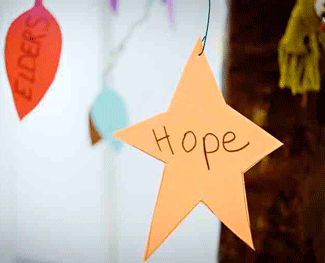
The Tree of Life methodology, developed by Ncazelo Ncube (REPSSI) and David Denborough (Dulwich Centre Foundation), has now been used in many countries around the world.
Over time, we will add stories and accounts from workers and communities in Canada who are using the Tree of Life to respond to various forms of trauma and hardship.
To read more about the Tree of Life, click here...
Hopework: The Tree of Life as a helpful metaphor for families with children with cancer
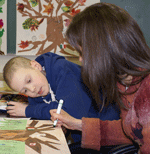 When parents approached Linda Moxley-Haegert to run a support group for families in which children had cancer, she knew that she wanted an approach that would not only elicit stories of suffering. She also wanted to draw forth stories of the achievements, knowledges, and resources these children and their families employed in dealing with cancer. Linda and an Art Therapist colleague decided to run Tree of Life workshops for the children, their siblings, and parents. To read more about this work, click here.
When parents approached Linda Moxley-Haegert to run a support group for families in which children had cancer, she knew that she wanted an approach that would not only elicit stories of suffering. She also wanted to draw forth stories of the achievements, knowledges, and resources these children and their families employed in dealing with cancer. Linda and an Art Therapist colleague decided to run Tree of Life workshops for the children, their siblings, and parents. To read more about this work, click here.
Getting through the storms
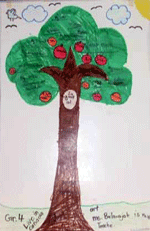 ‘We are a group of children ages 10 to 14 years old from two different schools in Toronto, Canada. We participated in a Tree of Life group and met every other week for a few months. We learned a lot in our groups. We hope that this booklet can be shared with other kids who are going through storms – not only in Toronto, but around the world …’
‘We are a group of children ages 10 to 14 years old from two different schools in Toronto, Canada. We participated in a Tree of Life group and met every other week for a few months. We learned a lot in our groups. We hope that this booklet can be shared with other kids who are going through storms – not only in Toronto, but around the world …’
To read the booklet the children made about their Tree of Life group, click here.
If you want to print out this booklet to use with children, this version has been designed to be printed out back-to-back and folded and stapled down the spine. The pages will appear out of order on screen but will be in order when made up into a ready-to-use booklet.
Tree of Life sculpture
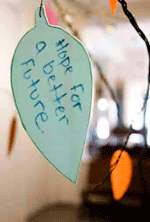 This sculptural Tree of Life was a collaborative project which represents Aboriginal communities and people, rather than our individual lives.
This sculptural Tree of Life was a collaborative project which represents Aboriginal communities and people, rather than our individual lives.
It was created by participants attending the art-based workshop If trees could talk: Sharing our stories through the creative arts at a conference on Building resilience in times of crisis held in Winnipeg May 14–15, 2009. Participants involved in the sculpture were from three Aboriginal communities in Manitoba and Ontario (Lake St. Martin First Nation, Cross Lake Band, and Pikangikum First Nation).
To read about this project – and to see more photos of the sculpture – click here.
Tree of Life at the Annex House
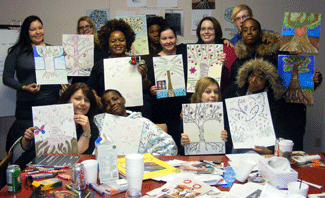 This document records some of the responses from both young people and workers of the Annex House, a residential youth service in Toronto, Canada, during a workshop facilitated by Ruth Pluznick and Natasha Kis-Sines of Oolagen Community Services. Read more ..
This document records some of the responses from both young people and workers of the Annex House, a residential youth service in Toronto, Canada, during a workshop facilitated by Ruth Pluznick and Natasha Kis-Sines of Oolagen Community Services. Read more ..
Tree of Life: Questions about professional identity for child and youth workers
Natasha Kis-Sines and Ruth Pluznick developed the following questions to use with fellow colleagues at Oolagen House in Toronto, Canada. We hope they will be useful for workers in other contexts. To read the full list of questions, click here.
To find out about training in the Tree of Life approach, click here…

dyc123
May 24, 2023I found a copy of the “resilience tree” online to use in a mock session as counsellor in group therapy in university. I love this tree because it lends support and recognition of the resources that are available and mostly ignored, due to feelings of hopelessness, shame, or blame that often is associated with traumatic experiences.
The resilience tree’s branches and leaves represent personal characteristics that each client member acknowledges positively about themselves. The trunk represents their values and beliefs, while the roots represents resources/strengths that help them through difficult times. Each client member then shared their unique outcomes with the rest of the group, thereby allowing for reflection and validation by the rest of the group. This session provided me and my student peers a glimpse into the power of the word, using the resilience tree as a guide to illustrate and express shared experiences. Very educational and fulfilling!
Geoffrey Haber (he/him)
May 13, 2022Love this idea. Anchoring in a rooted identity and branching out to a hopeful future. It also connects with my religious tradition in which our foundation text, the Torah, is referred to as a tree of life.